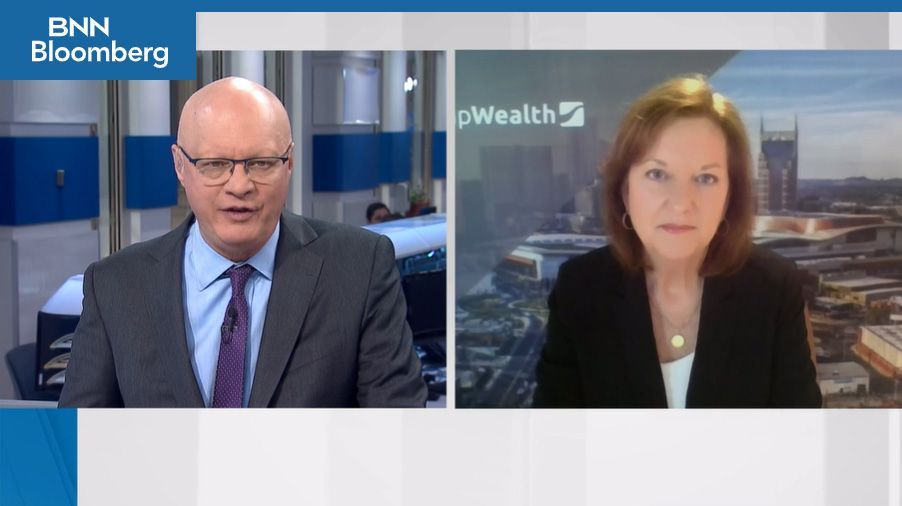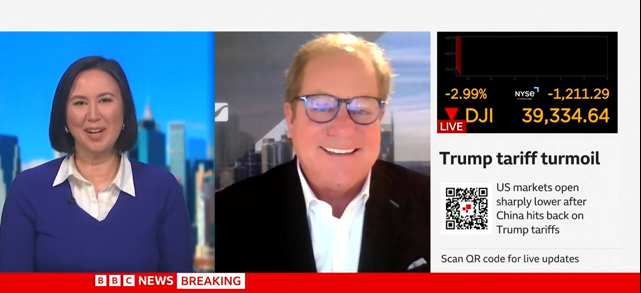Portfolio Management Strategies in a Volatile Market
April 9, 2025
Escalating tariffs and uncertainty surrounding trade policy roil the markets. But from our vantage point at CapWealth, this kind of volatility, while uncomfortable, is exactly how markets are supposed to behave when uncertainty is high.
“It’s like the first inning of a game that we don’t know how long it will run,” said our CEO Phoebe Venable to The Wall Street Journal (paywall). Markets move on both data and emotion. And when investors aren’t sure what’s coming next, that uncertainty gets priced in through short-term swings.
The market reflects our collective outlook on the future. And right now, that outlook is clouded. Policy changes, global conflicts, and economic shifts have all made it harder to predict where things are headed. Even companies that aren’t directly impacted by tariffs or regulation may delay hiring or scale back growth plans simply because the environment feels uncertain.
At the same time, we’re coming off a stretch of elevated valuations. Enthusiasm and speculation drove stock prices higher than fundamentals might justify. Now, investors are looking for solid ground in a sea of mixed signals.
This type of pullback doesn’t mean something is wrong with the market. It’s part of how the market finds balance.
Portfolio Management Strategies for Volatile Times
That said, volatility can feel awful, even when the market functions the way it should. No one wants to see rapid shifts in the assets that are supposed to fuel your long-term goals and financial needs.
Take a deep breath. What you feel right now is a natural reaction, too. Give your emotions an outlet, but don’t let them derail your financial plan. At CapWealth, we focus on helping clients stay anchored through uncertainty with investment strategies that are built to weather change.
1. Stay Focused on Your Timeline
Market headlines change daily, but your financial goals don’t. Retirement, education funding, and legacy planning all demand a long-term horizon in mind, even when the short term feels chaotic. Think back to the last major downturn. What investment choices did you make? Did you deviate from your plan, or stick to it? No one is perfect, but you can carry the lessons from the last period of volatility to make better choices in the present.
2. Diversify with Purpose
Diversification remains one of the most effective ways to manage risk. By spreading your investments across different asset classes, sectors, and geographic regions, you reduce the impact any one area can have on your overall portfolio. In times of market stress, diversification provides balance.
3. Avoid Timing the Market
No one, not even professional investors, can consistently predict the exact right moment to buy or sell. Attempting to time the market often results in missing the best days of performance. Staying invested, even through rough patches, has historically delivered stronger results over time.
4. Look for Opportunity
Market downturns can create opportunity. High-quality companies may become undervalued during a selloff. If you have a solid long-term investment strategy, moments of fear in the market can become moments of strength for your portfolio.
Investing during volatility requires patience and perspective. It’s easy to react emotionally when markets fall, but short-term movements should not dictate long-term decisions.
At CapWealth, we work with you to build a portfolio designed for real-life goals. That includes planning for times like this. When uncertainty and frightening market news fills your news feeds, it’s hard to think clearly. With a thoughtful, well-researched investment strategy, you don’t need to fear volatility. You can prepare for it.
If recent market swings have you questioning your investment strategy, we’re here to talk. Whether it’s revisiting your goals or exploring new portfolio management strategies, CapWealth is committed to helping you invest with confidence—no matter the headlines.













